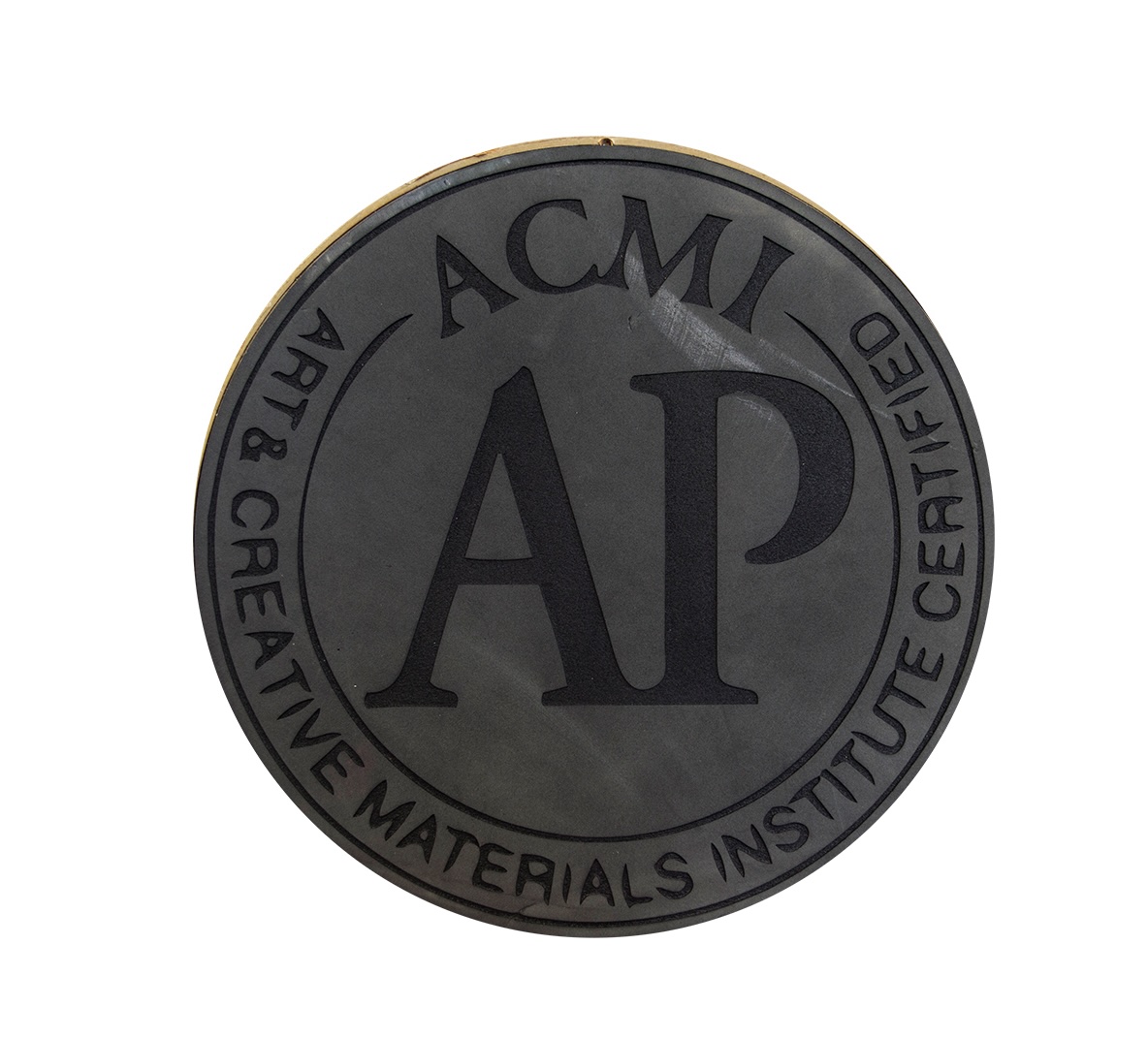Foam << AP >>
Laser cut foam on superwood. Found materials. 30 x 30cm
2014, Michaelis School of Art Photography Gallery
Why is the "AP" logo appropriated in this piece?
The artist’s appropriation to the "AP" logo was at first chosen because it's self-referential, using the authenticity of another entities logo to promote my work. Encouraged by the vulgarity of stamping her initials on anything possible, showing how foam is versatile to a vaste range of impressions. It was also a critique of the pressure for artists to brand themselves and the trap if they do, within the constraints of commodified culture. The logo, seen on art supplies as a mark of standardisation, became her way of confronting the expectation that artists must produce a polished, market-ready identity.
The artist initially felt drawn to the "AP" logo because it aligns with her initials, therefore it plays with the "vulgarity" of self-promotion. Beyond this personal connection, she sought to appropriate a symbol commonly seen on art supplies in stores—one that signifies the standardization of artistic materials. By repurposing this logo, she critiques the expectation that artists must “buy” their creativity through commercial products, when the most impactful work often emerges from materials found in everyday life. Inspired by ready-made objects—materials that exist outside the traditional art market and are transformed by an artist’s intellectual work and creative process to communicate something meaningful about culture. In this way, her use of the "AP" logo becomes both a playful commentary and a deeper reflection on the commodification of art-making and the value of found materials in contemporary practice.
While researching printmaking mediums, what drew the artist to screenprinting was how it made printing, particularly on textiles, more accessible. This innovation had a significant impact on society, enabling popular culture and protest movements to spread their messages more widely, while allowing artists to produce at a faster pace. This work demonstrates how using soft materials like foam opens up new possibilities for printing on diverse surfaces. Foam, like a sponge, absorbs and transfers mediums under pressure, enabling prints on flat, curved, and 3D objects. Its softness allows it to conform to irregular shapes, offering a more adaptable method for producing prints without the need for specialised designs, thereby broadening creative possibilities—a process made visible in this photo series of performative printmaking, where the artist prints onto themself while wearing body-conforming "Nude" shapewear.
The printing process with these ready-made "body sculpting" garments presented an intriguing challenge for the artist. Drawing parallels to her earlier experiments with packaging, these garments serve as containers that are simultaneously 3D and 2D, aligning with her ongoing exploration of consumerism. She observes how society is inundated with packaging—promising luxury, safety, health, or an escape to a tropical paradise—when, in reality, it’s often just glycerin and synthetic perfume. This dissonance mirrors how shapewear offers an idealized body image while concealing the physical discomfort it imposes.
In this body of work, the artist adopted "AP" as a signature, not only reflecting her initials but also referencing the concept of the "Artist’s Proof." In printmaking, the Artist’s Proof is the version approved by the artist for production—a certified statement of intent. Using logos and symbols of certification of the art-making process also calls into queston how we assign value to these visual representations.
It is perhaps less obvious that this work speaks to how artists must navigate marketing to survive, a term often regarded with suspicion. Throughout her career, she has championed the exploration of self-marketing as a powerful concept used by artists, rather than dismissing it or reducing it solely to a commercial tool used by companies. Her intention is to critique and expose how these forces shape both body and mind, identity and society. This "act of creating stamps a a form of legitimacy" evolved into ateliers where the artist inviting others into this dialogue—an opportunity that consumers rarely get when they are simply asked to accept and consume the images presented to them.
The act of stamping in this work carries connotations of authority, and in self-stamping, the artist transforms this authority into an act of self-care—what she describes as an "auto-print." This practice embodies the intersection of personal branding, critical inquiry, and material experimentation, producing a complex narrative that resists straightforward explanation.
In this project, the artist deliberately blends high and low art elements to forge a unique form of innovation. The precision and technology of laser cutting, typically associated with high-end production, are contrasted with foam recovered from waste sites—an intentionally humble and discarded material. By combining these elements, she challenges conventional hierarchies in art-making while critically engaging with the broader implications of consumer culture and the values assigned to different materials. This approach reimagines overlooked or undervalued processes within contemporary art, situating her practice at the intersection of critique, materiality, and personal expression.

Auto Print, 2014
Acrylic textile printing medium
Photograph by Paris Brummer and Carmen Naeem

Auto Print, 2014
Screenprint onto Shapewear that I bought for a school ball at age 16
Photograph by Paris Brummer and Carmen Naeem
#drawing #contemporary #printmaking #painting #interdisciplinary #sculpture #digital

Auto Print, 2014
Acrylic textile printing medium
Photograph by Heinrich Nieuman
#screenprinting #contemporary #printmaking #painting #performance #performative #artisticprocess #textile

Auto Print, 2014
Acrylic textile printing medium
Photograph by Paris Brummer and Carmen Naeem
#screenprinting #contemporary #printmaking #painting #performance #performative #artisticprocess #textile

Auto Print
Acrylic textile printing medium
Photograph by Paris Brummer and Carmen Naeem